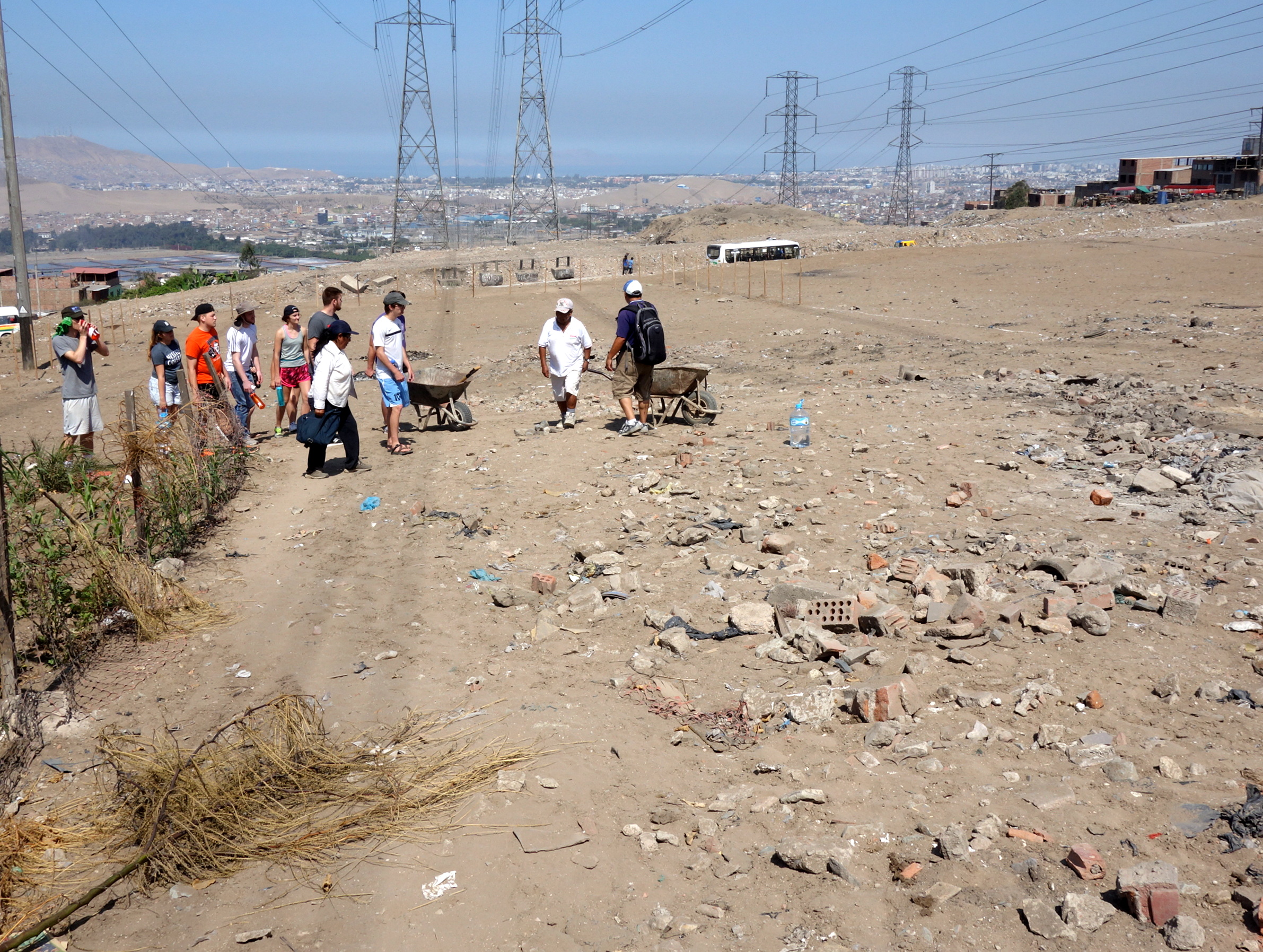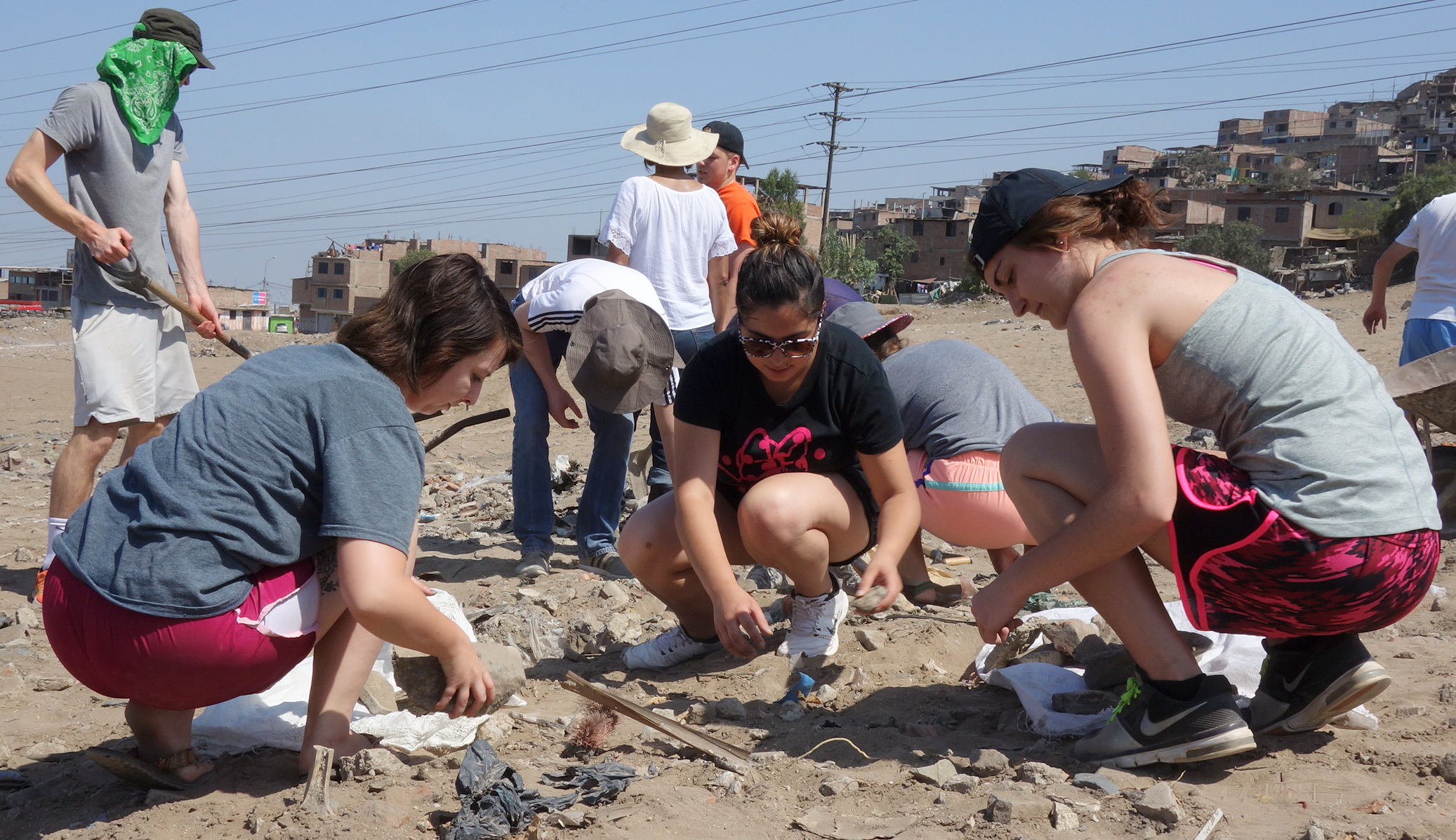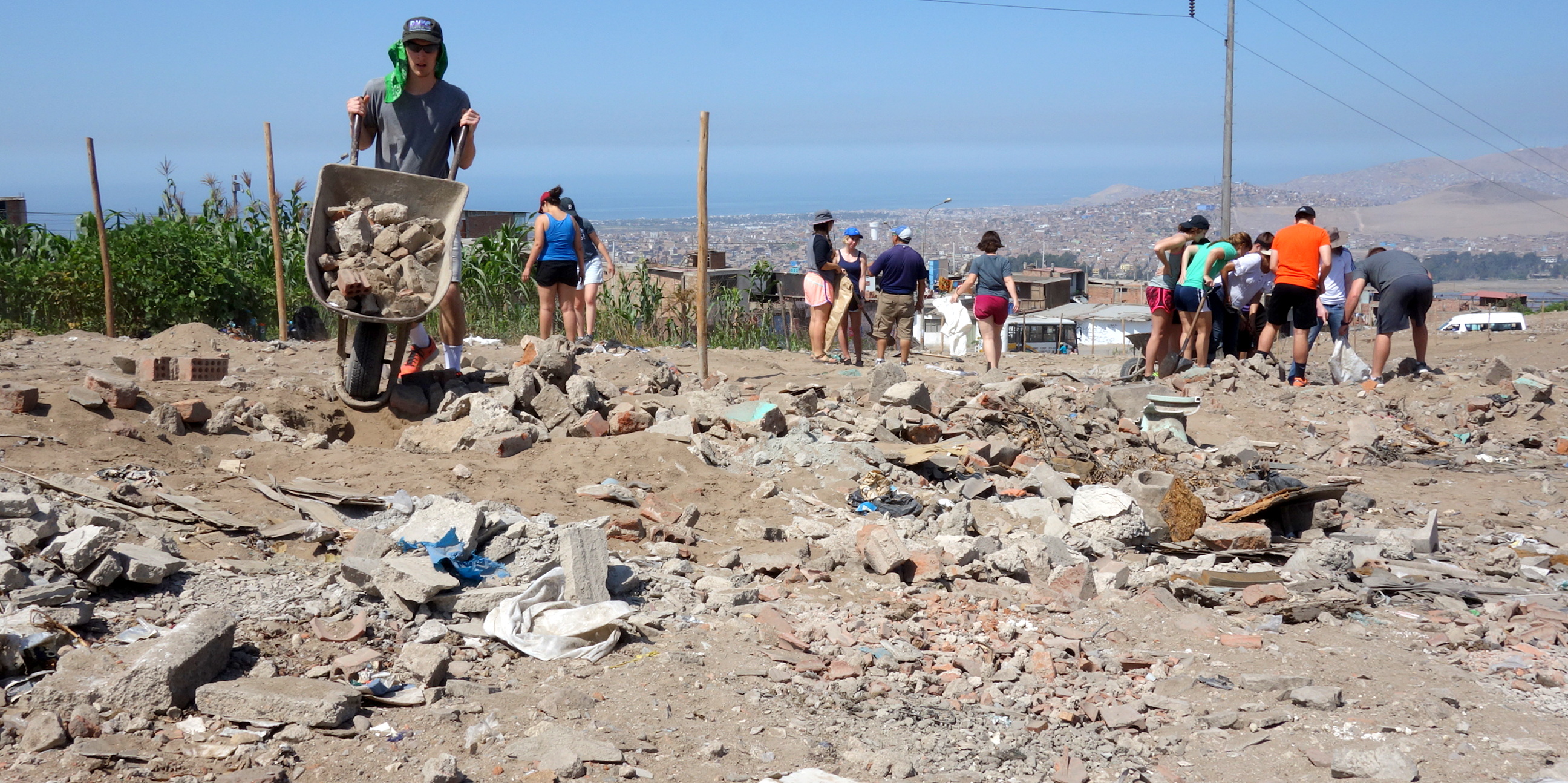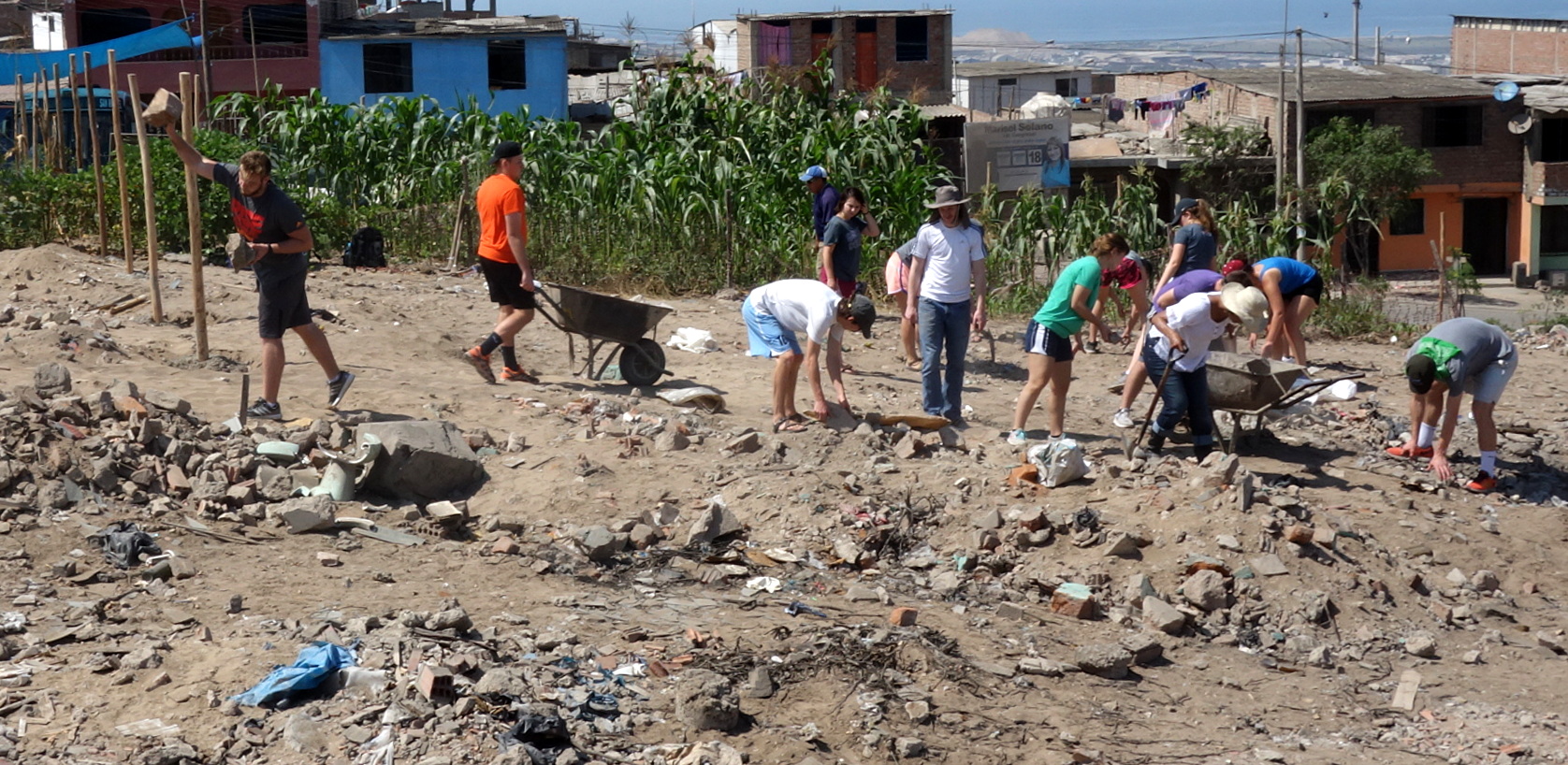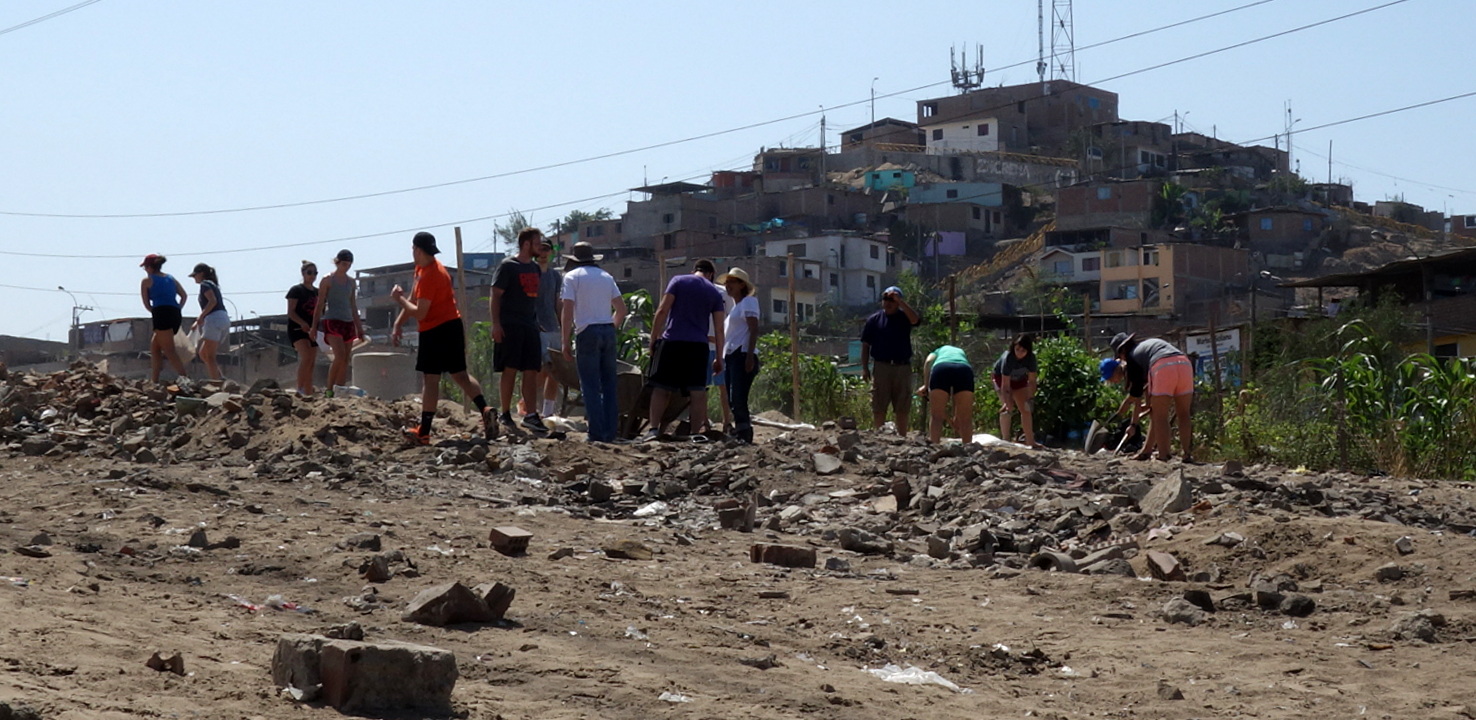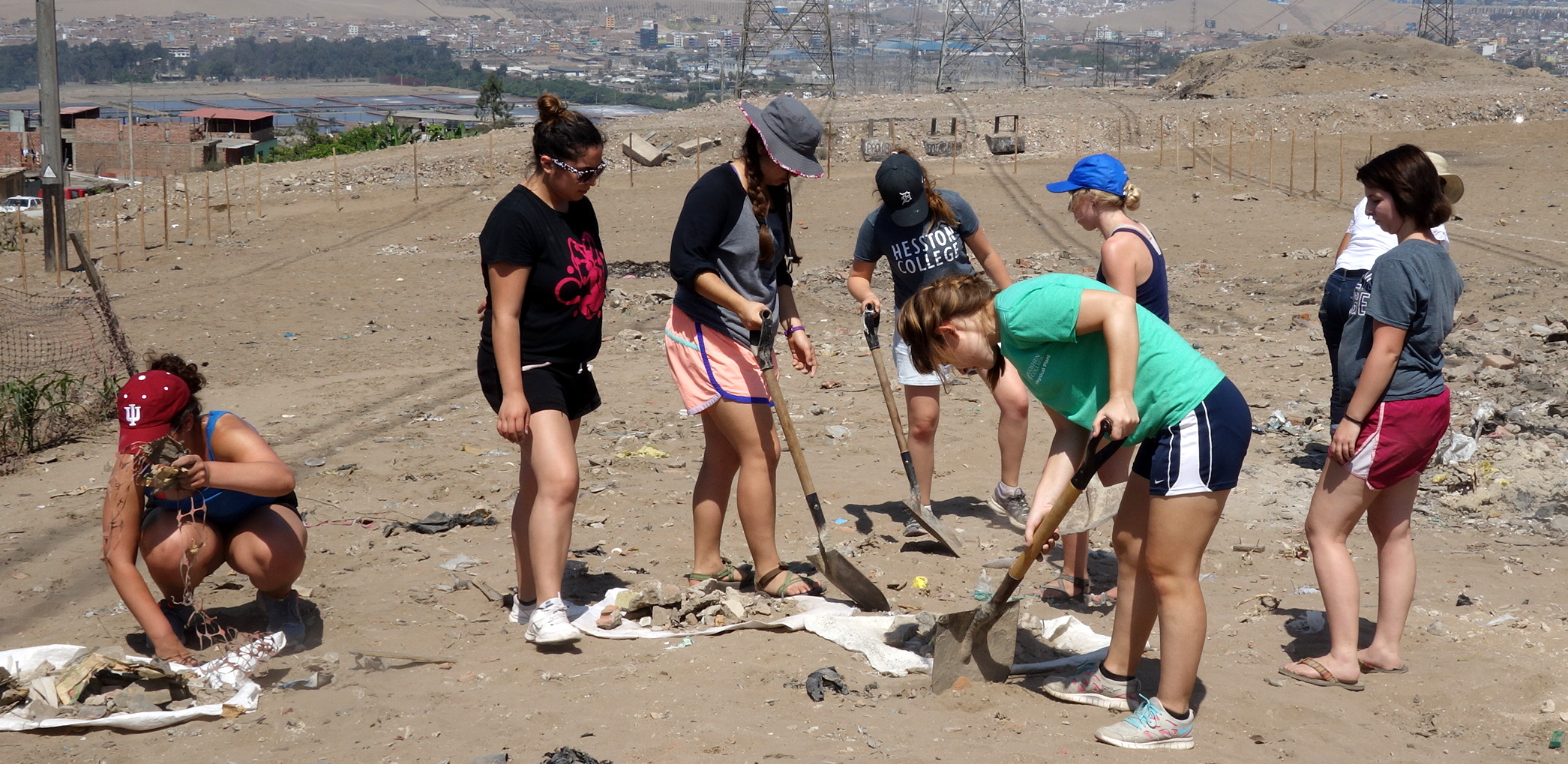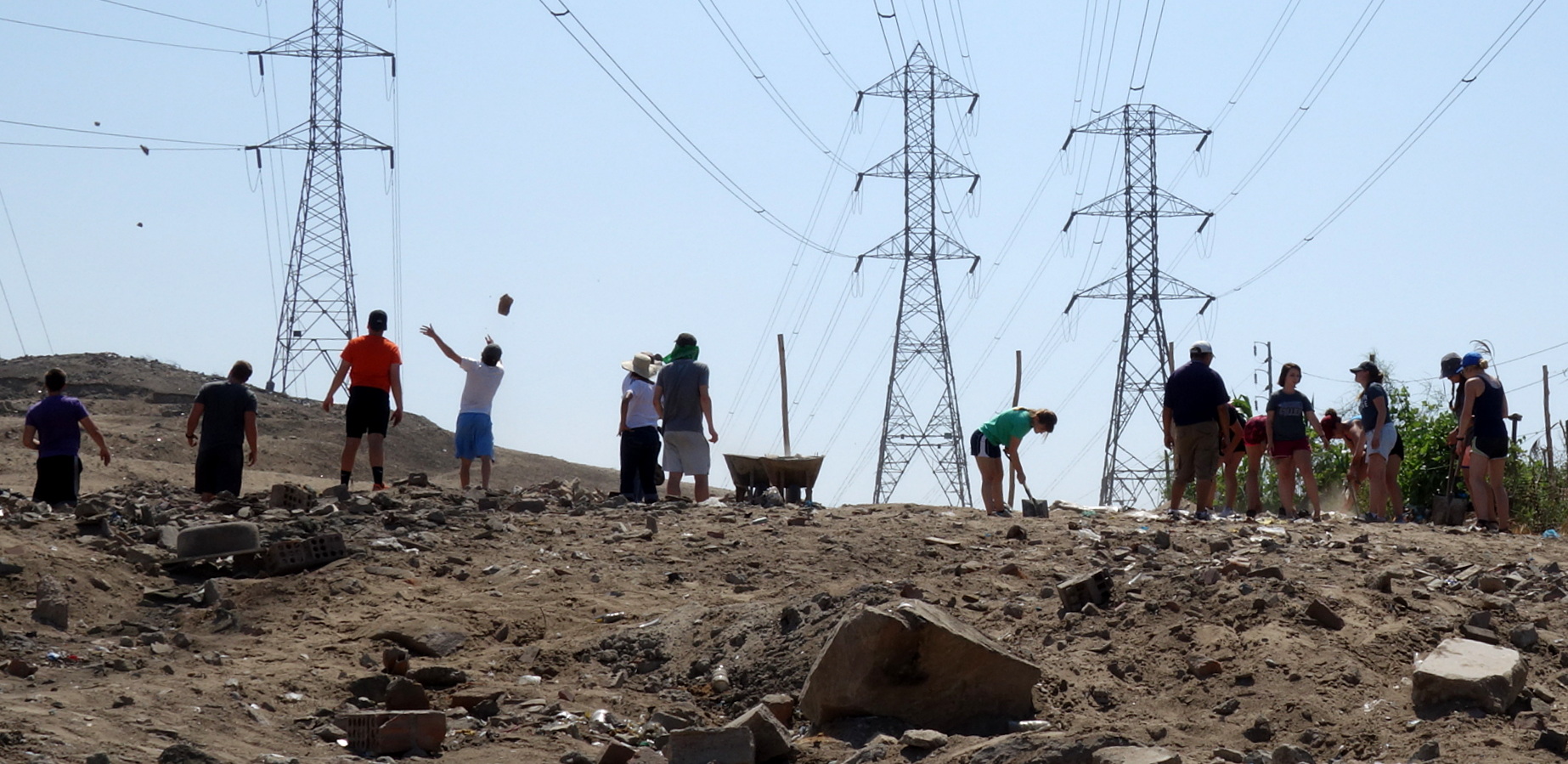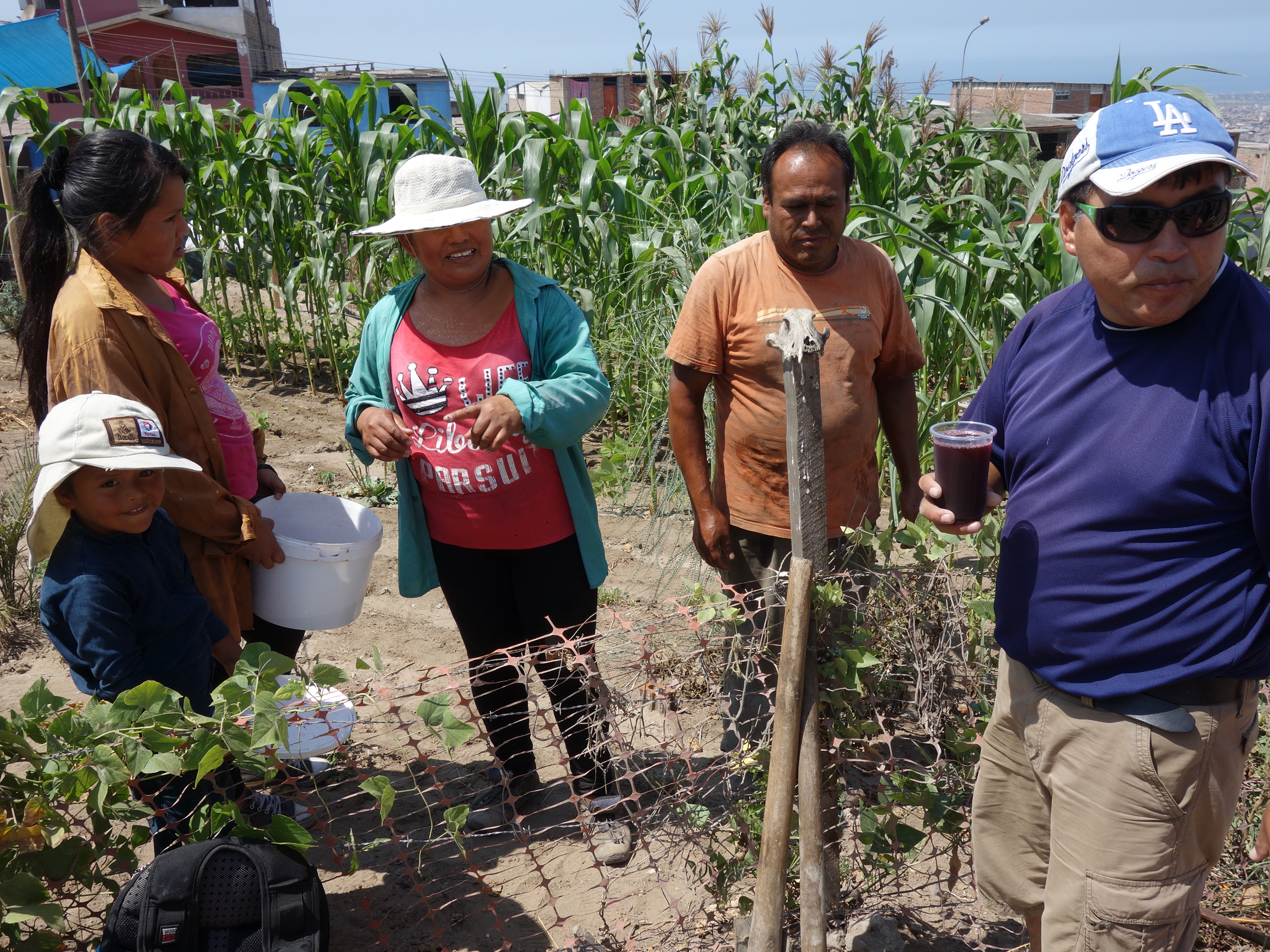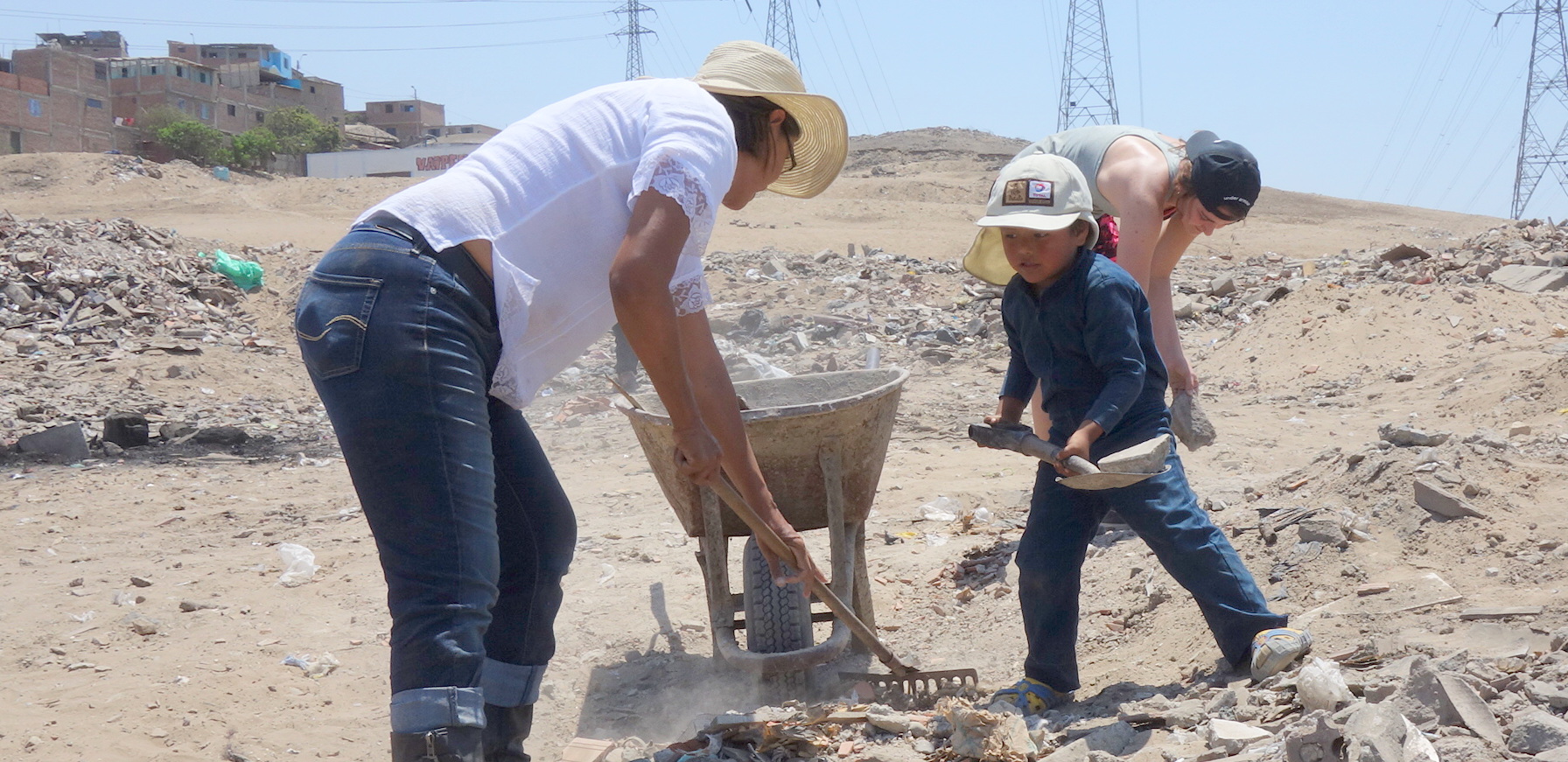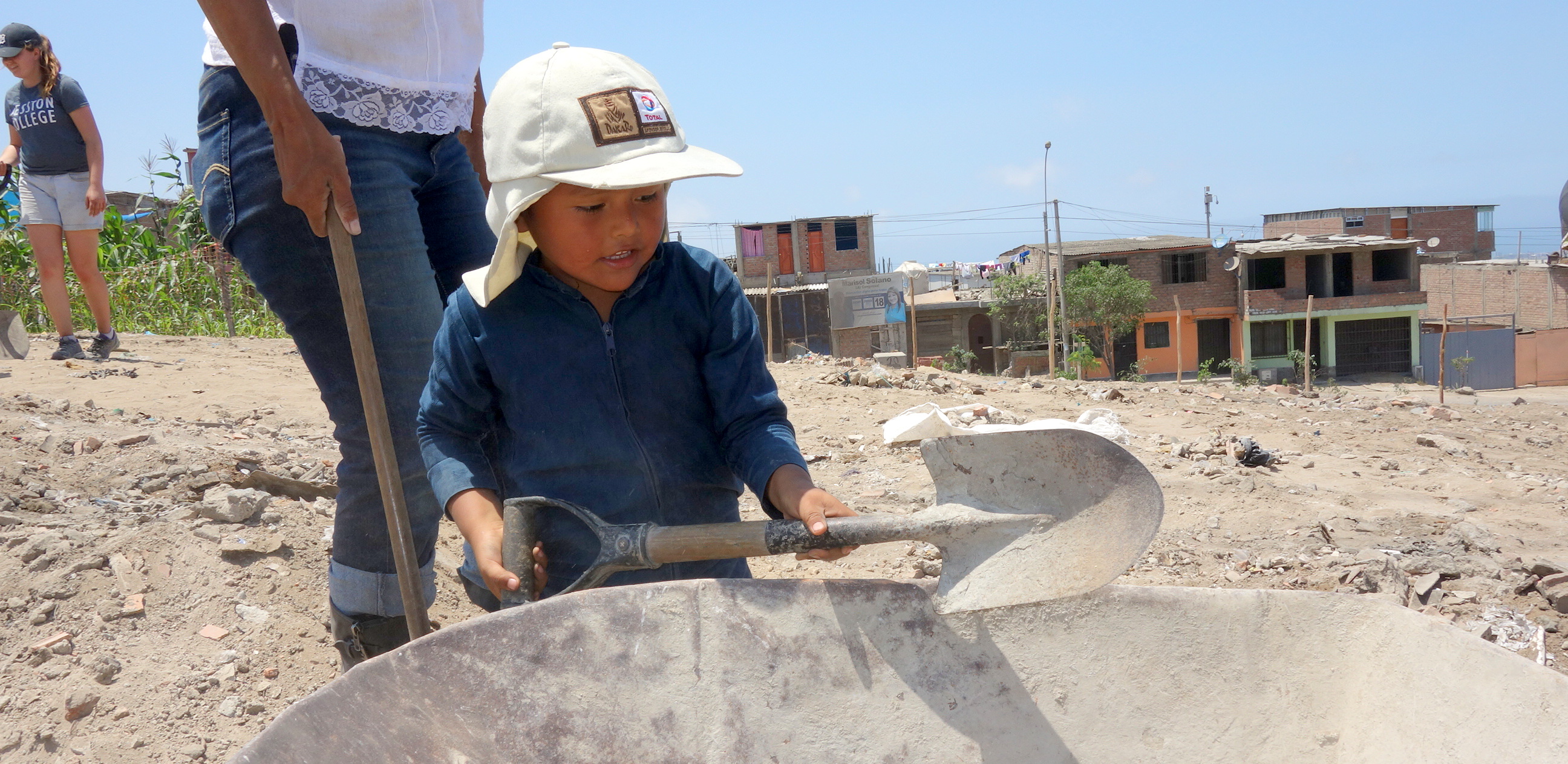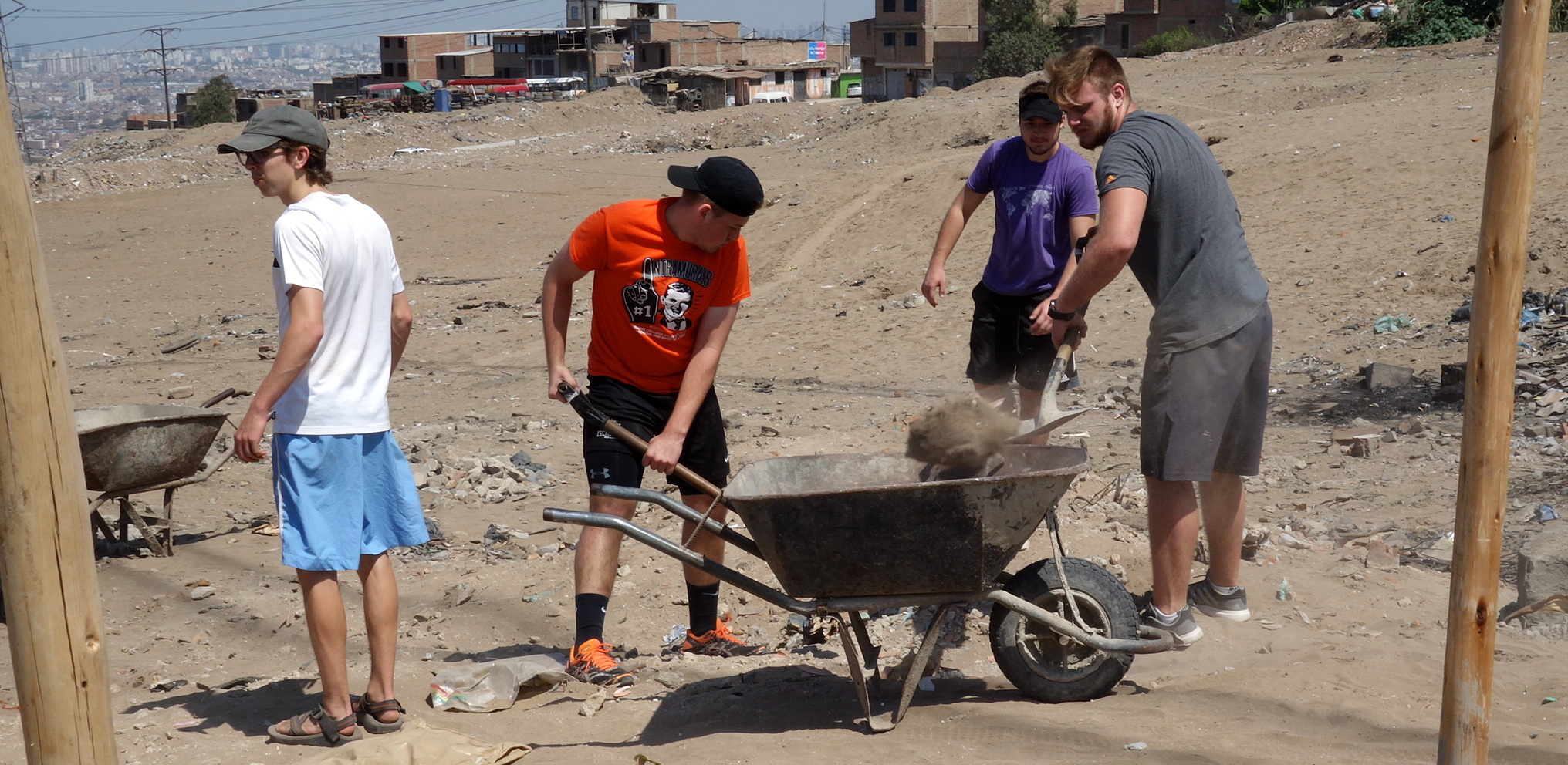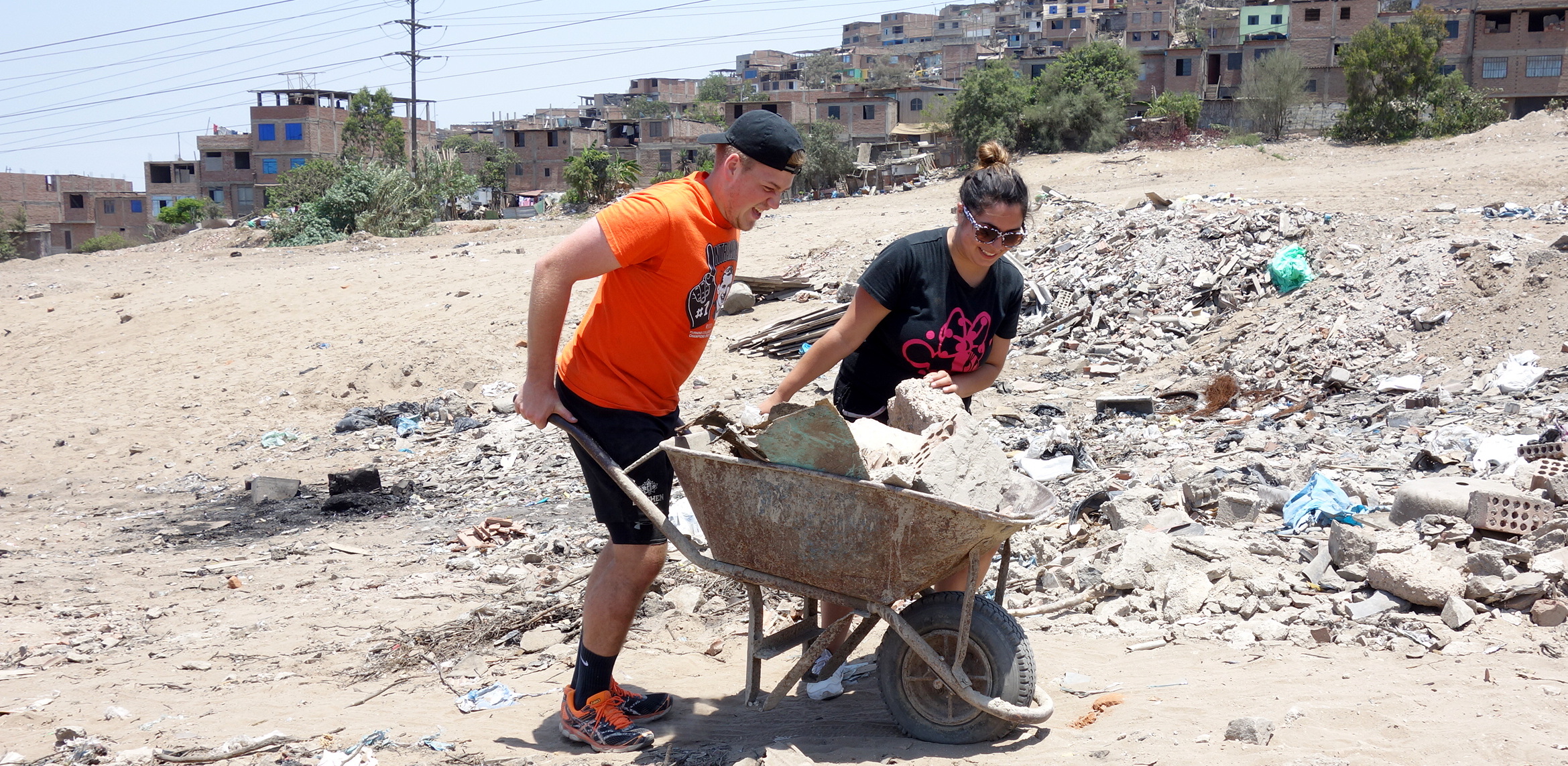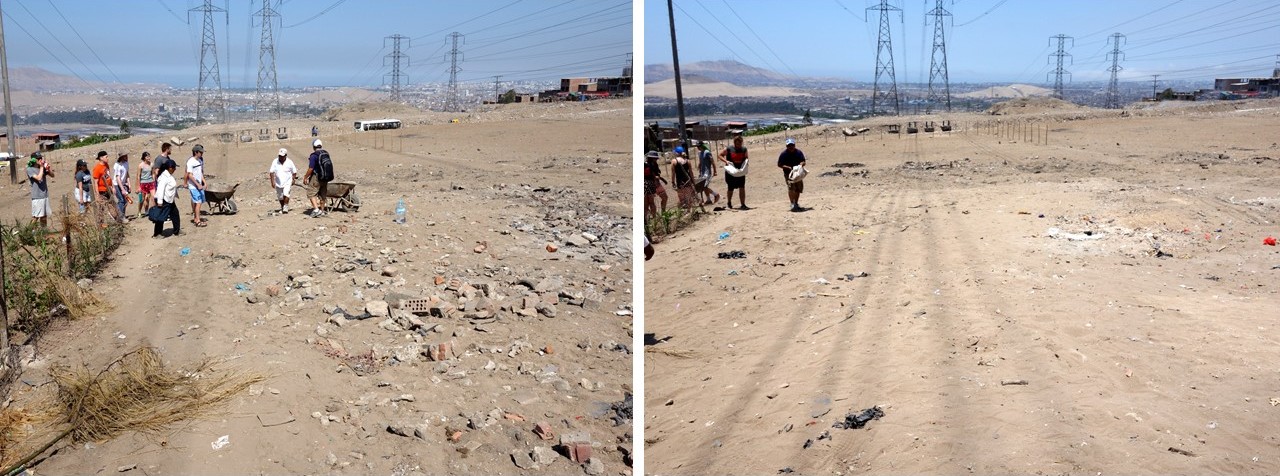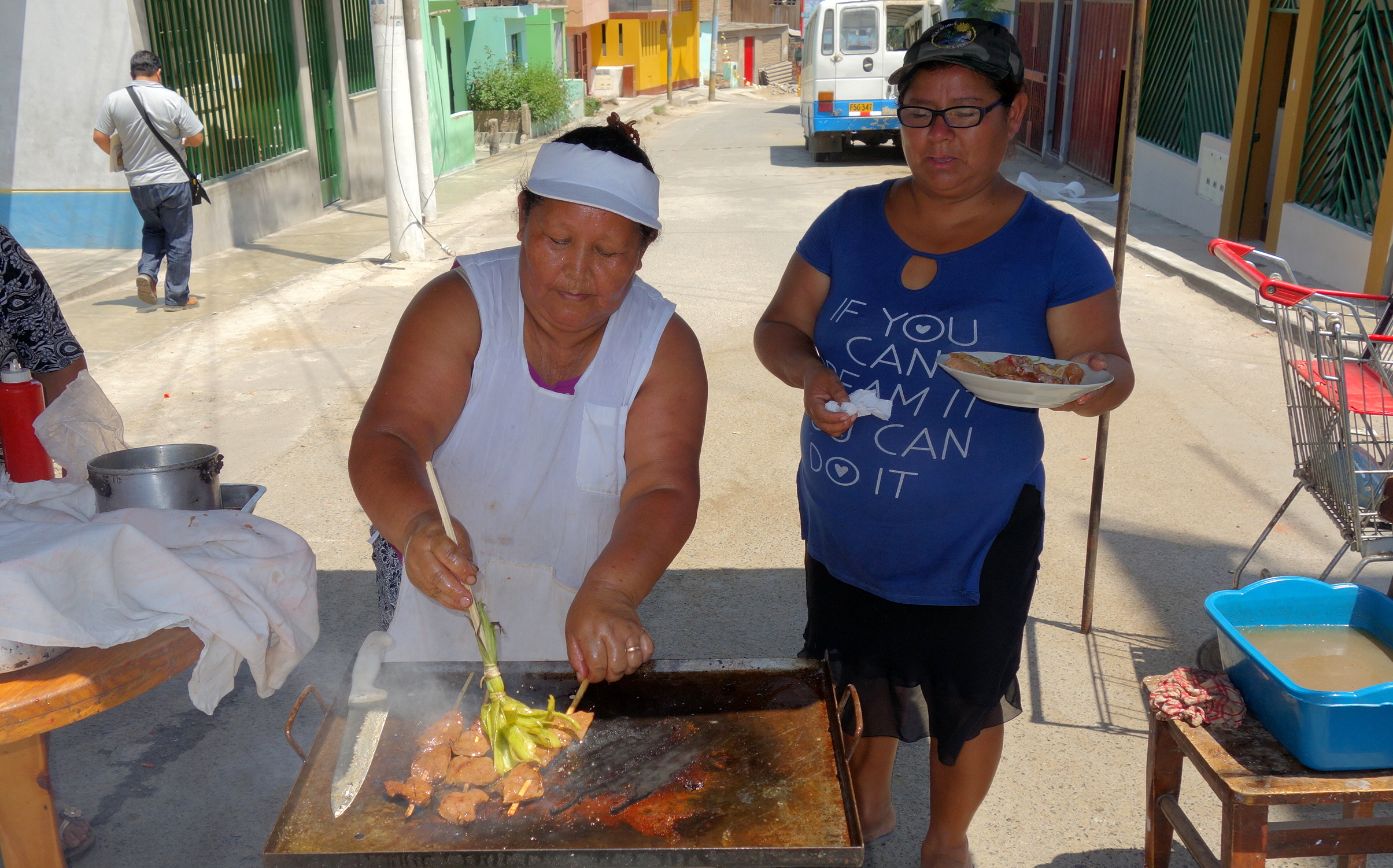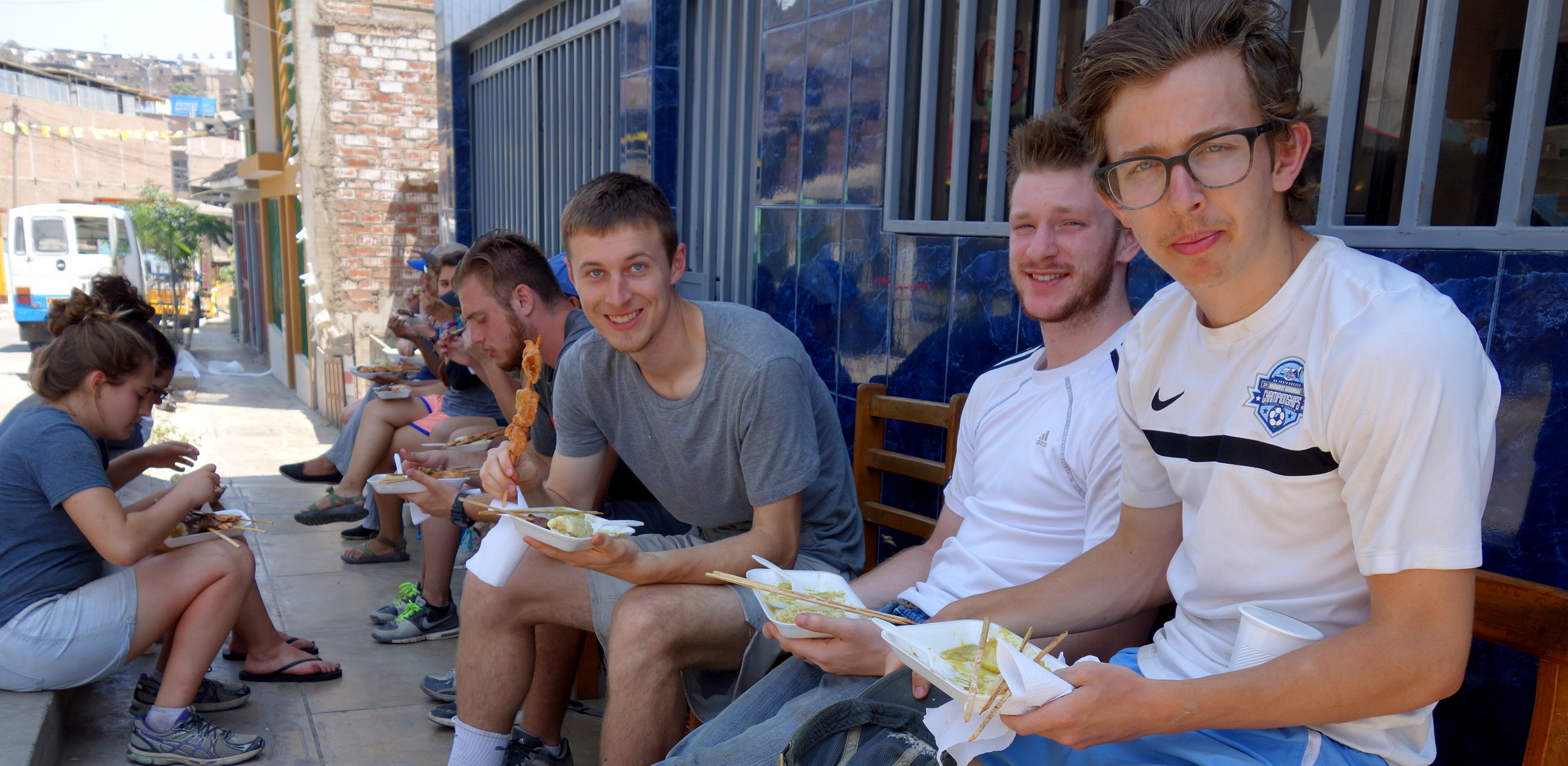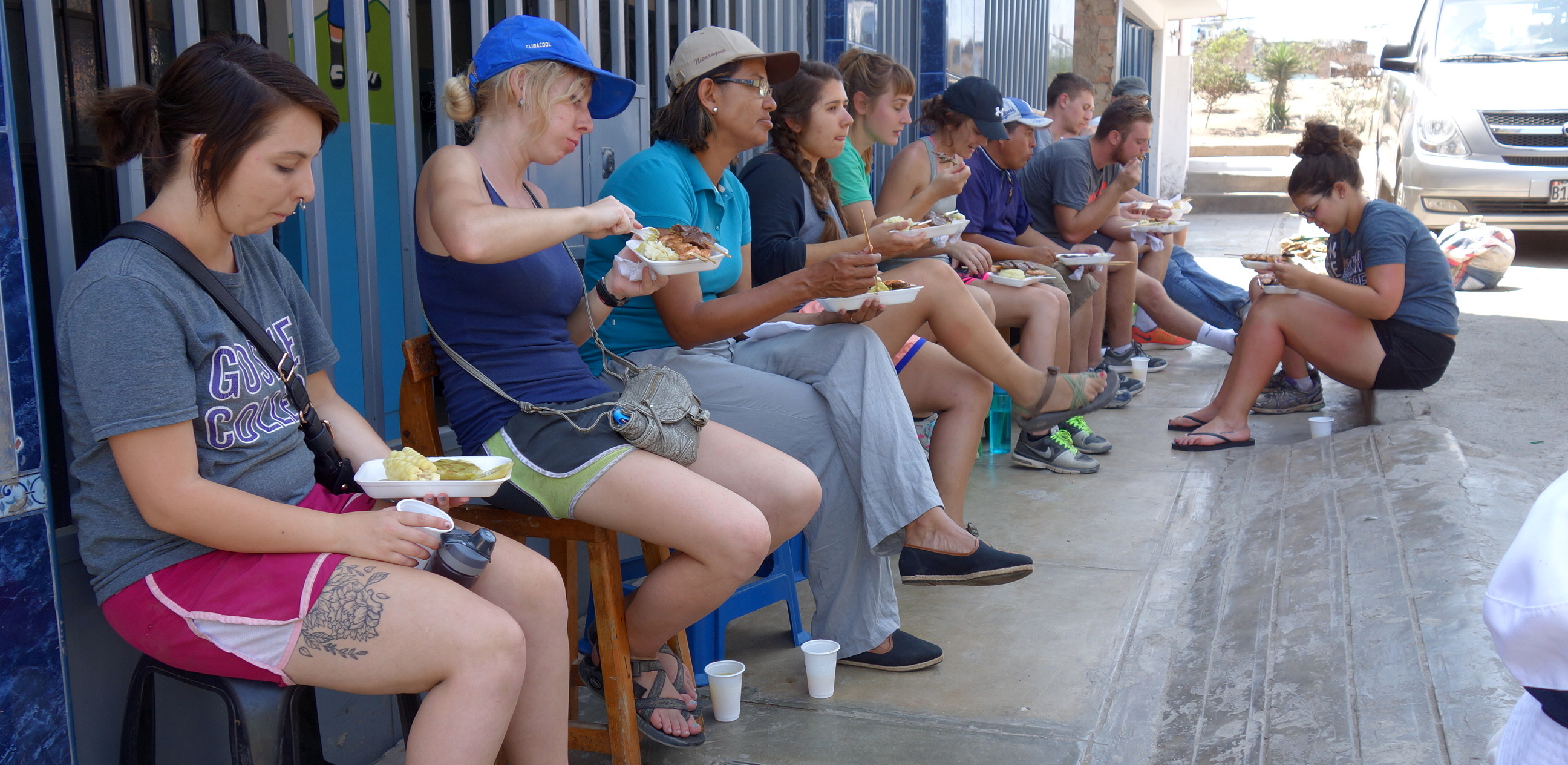A two-day visit in the Cono Sur – Part 3
Saturday, January 28
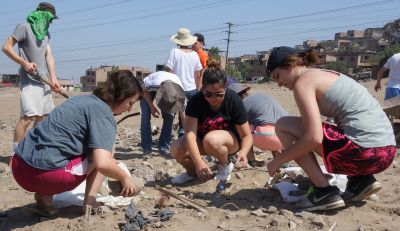
Some inspiring projects in the Cono Sur are the bio-huertas, or urban gardens, where those in surrounding low-income neighborhoods use vacant lots to grow fruits and vegetables. A video, From the Earth to the Pot, describes several bio-huertas in Lima. The project organizer, Senora Gregorio (seen at 8:44 and 14:30 in the video), told us the land under powerlines could not be used for homes, and so had instead become a large, uncontrolled garbage field. They cleared out all the trash and got assistance from the power company to buy plants and water for converting the lifeless area into a green, life-giving oasis. The project continues to expand, putting more vacant land “under the plow,” and previous SST groups as well as ours have been privileged to help. While last semester’s group worked planting in an established bio-huerta, this semester’s group worked in a site for a new bio-huerta clearing the land of rocks and trash.
Once everyone had worked up a good appetite, we returned to Alicia’s home for a traditional Peruvian favorite: anticuchos, which are beef heart or chicken pieces on skewers cooked over a barbecue.
In Katie’s journal she reflected after the trip about the meaning of service:
A lot of times when I think about service, I think about the story of Mary and Martha’s encounter with Jesus in the Bible. As people who want to serve others, we have to choose to serve in the example of one of these sisters or a combination of both. Martha served Jesus by doing. Mary served Jesus by being with him. I think that both are important, and that as a group we did a little bit of both in Cono Sur.
We served by doing at the family center on Friday. After talking with the director, we didn’t interact much with the children, who just walked by in their trains holding on to each other’s shirts. I was still able to appreciate this though, because it gave us time to just observe. While our paint job probably won’t mean much in the long run, I hope the fact that we came to do it will mean something for the people there.
Similarly, our efforts at the huerta might not have been that physically significant, but I felt that it was worthwhile thinking about what the gardeners would be doing with it in the future. Again, what mattered most was that we were there, taking in the scene.
Plus, there were plenty more times when we got to be Mary. We played soccer and volleyball with the locals of Villa Maria, both things that can be understood by both sides across the language divide. People like Willy’s sister, Corpusa, invited us into their homes so that they could share their stories with us. We slept in their houses and ate the food they prepared for us. We asked questions and laughed at their jokes. Ultimately, this small connection could be just as meaningful to the people of Cono Sur as the rocks we moved.
